Puerto Rico and the Spanish Virgin Islands: so accessible!
Destination - CaribbeanMany of those who have had the chance to sail in the Spanish Virgin Islands describe this paradise for sailing as the way the BVI were forty years ago. Wild and unspoiled anchorages are dotted around every few miles and are ideal for snorkeling and don't miss out on the great ambiance when you make your stopovers…
LOG BOOK
Whenever the Virgin Islands are mentioned, it is invariably the British ones that we think about. Over the last forty years, they have become a veritable mecca for chartering. Of course, the BVI do offer everything that you could wish for when renting a boat: many anchorages; great partying opportunities; a sea bed which is still interesting, and especially easy and well-protected sailing. In short, it's the ideal spot to discover sailing and to have a great time. However, for those of you who are looking for a little more authenticity and in particular, quieter anchorages and a well-protected sea life, the Spanish Virgin Islands, around forty miles from their British cousins are the new paradise. The Moorings have just opened a new base in Puerto Rico, which offers a real Latino atmosphere as well as the Caribbean culture which is to be found all across the West Indies. The Spanish Virgin Islands are less well known to sailors, whether they are in the area in their own boat or chartering. Situated within close proximity to each other, the islands are a true natural paradise: beautifully preserved islands, with white sandy beaches, deserted islets and especially, crystal clear waters which harbor shimmering coral reefs that are full of sea life. Just off Puerto Rico, one can find several islands, but the most interesting amongst them are Culebra and Vieques. Vieques is the largest of the Spanish Virgin Islands. It is home to marvelous beaches, including the famous Mosquito Bay and its bioluminescence, but also for the lovely village of Esperanza, with its typically Caribbean sea front promenade. It's wonderfully charming and the ambiance is unique! Just off the island of Culebra, you will find one of the best fishing and diving locations in the whole of the Caribbean. It's somewhere that all divers and fishing enthusiasts should try at least once. Also on Culebra, is Ensenada, a pretty anchorage where you can get a feel for the unique atmosphere of the open air bars and restaurants of the Caribbean… One other advantage of choosing this destination, is that you can discover the magnificent old town of San Juan at the start or the end of your cruise, or even visit the El Yunque rainforest and the grottos in the Rio Camuy park. Unmissable! Puerto Rico is a complicated country. It was bought from Spain by the United States in 1898 after the Spanish-American War. In 1952 the island obtained partial independence from the US. Today, Puerto Rico is an independent state, although associated to the United States. This means that the inhabitants have American nationality (since 1917) but not citizenship… They cannot vote in the presidential election, but can vote in the primaries for a non-voting member of the House of Representatives! At the last referendum in 2012, over 60% of the population voted in favor of changing the country's status and becoming completely independent of the United States.
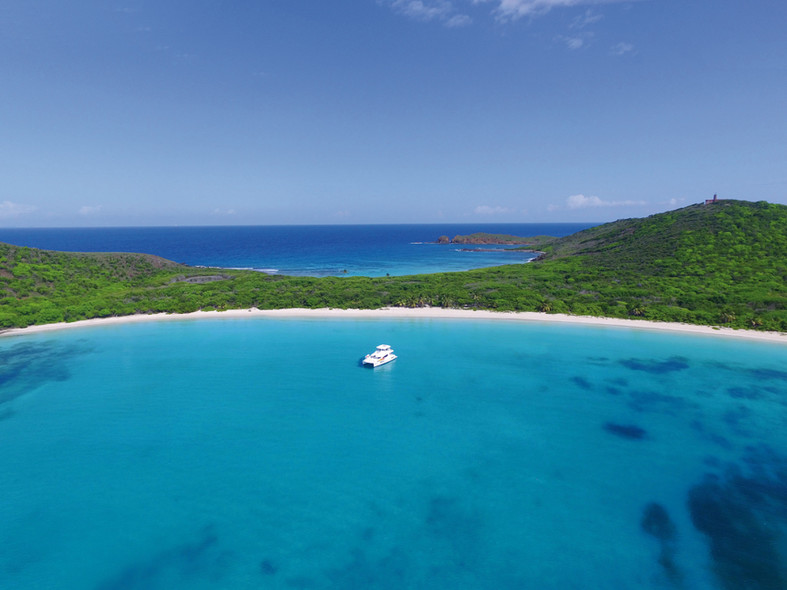
The crystal clear waters of the Spanish Virgin Islands await your arrival.
PUERTO RICO: GOOD TO KNOW
- Formalities:
When travelling to Puerto Rico, the entry formalities are the same as for the United States (Puerto Rico is an unincorporated territory of the USA). So a passport and ESTA formalities are essential, as well as a visa depending upon your country of origin.
- Getting There:
Puerto Rico's main airport - San Juan Luis Muñoz Marin International Airport (SJU) - is an international airport which is easily accessible from the US (Miami, New York, Atlanta). The trip by taxi from the airport to the marina takes under an hour (US$85)
- Weather:
You're in the West Indies, so the weather is sunny and hot year round. The ideal period for sailing is from December to June. The summer is more humid, and there is a hurricane risk in the fall.
- Currency:
The local currency in Puerto Rico is the US dollar. Good to know: The electric current is 110 volts, like the US. Tipping is normal in Puerto Rico (15-20%). English and Spanish are spoken everywhere and by everyone.
- Local Boat Charter Companies :
The Moorings - Sail Caribe - Charters Puerto Rico - Sail Away Catamarans

A TYPICAL ITINERARY
The Moorings has just opened a new base and is offering mainly motor catamarans: the Moorings 514 PC; the version of the Leopard 51 built specially for them; Moorings 4800 available for bareboat charter, or Moorings 4800 or 5800 (Leopard 48 and 58) sailboats with a crew for maximum comfort and to allow you to be able to make the most of the destination.
Here's a typical itinerary to help you discover the Spanish Virgin Islands, put together by local crews used by the company.
Day 1
Isla Palominos5.5 miles Having taken charge of your cat in Puerto del Rey marina, it's time to set off. To kick off your seven day tour of the Spanish Virgin Islands, head north east on a short trip from Puerto Rico to Isla Palominos. This is only a short crossing, but it will give you plenty of time to get properly installed on your boat, and to spend a pleasant first night on board. Isla Palominos is a small island just off the east coast of Puerto Rico. Although small, it does have lovely lush green vegetation in a protected natural environment. With crystal clear waters and soft white sand beaches, it really is a little piece of paradise. However, at the weekend, this island is a favorite partying destination, and the evenings can be…lively!
Day 2
Culebra19.5 miles After waking up in the paradise that is the Spanish Virgin Islands, and having drunk a good cup of coffee on board, head east towards Culebra. Before heading in to your anchorage at Ensenada Honda, head for the little island of Caya Luis Pena, where you will be able to have a quiet lunch and then a swim in the afternoon. There are lots of moorings available, and it's a great place for snorkeling. It's worth mentioning that there is an incredibly abundant population of sea turtles here!
Day 3
Culebrita & Bahia del Almodovar8.7 miles After leaving Ensenada Honda, spend the day at Culebrita, an uninhabited natural reserve. From there you can head off on foot to the old lighthouse on top of the cliffs, and enjoy one of the Caribbean's best beaches: Tortuga. Then head back to Culebra and spend the night in your anchorage in Bahia de Almodovar in the south east of the Island. Situated in the south east of Culebra, Bahia de Almodovar is a wonderful example of the beautifully preserved areas of the Spanish Virgin Islands. It is a well-protected anchorage surrounded by lush, green mangroves. It's an idyllic place to spend the night.
Day 4
Flamenco & Playa Tamarindo11.7 miles Say your goodbyes to the south coast of Culebra, and then spend the day on Flamenco beach, one of the most beautiful in the world. From there, head around the north west of Culebra until you reach Playa Tamarindo, your anchorage for the night. The Discovery Channel voted Flamenco Beach the second most beautiful in the world. Now that must be worth the trip!
Day 5
Esperanza & Mosquito Bay30 miles You'll need to be away early for this trip to Vieques, the largest of the Spanish Virgin Islands. It will take you a few hours to get to Esperanza where you will spend your first night on the island. This little town, situated on the island's southern coast, is easily accessible. This is where you will find the famous Mosquito bay with its bioluminescent plankton. This is one of the things that you have to see in the Spanish Virgin Islands, and is of course best done at night, in a kayak! It's a unique experience!
Day 6
Ensenada Honda, Vieques7 miles Having witnessed the marvelous spectacle of Mosquito Bay, a short sail will take you to Ensenada Honda on Vieques. In this majestic bay, you will have time to explore the deserted mangroves, and fill your lungs with the salty air which bathes this earthly paradise. Before anchoring in Ensenada Honda, you might like to stop off at the beaches in Caracas or Chiva Island, two sumptuous places that are along your route.
Day 7
Green Beach - Punta Arenas15 miles On your last day, head back along the southern coast of Vieques, stopping at creeks or beaches that you may have missed, before heading for Punta Arenas on the eastern tip of the island. Try to get there early enough to see the sunset on your last night in this Caribbean paradise, and find the time to go snorkeling above the vestiges of former sugar cane plantations, now covered by water. Or lose yourself in the mangrove, discovering the incredible flora and fauna that inhabits it. Last Morning: Try to plan your last crossing so that you arrive at the Moorings base for 10am. This will allow you to make the most of your final day.
Destinations offered by
View all the destinations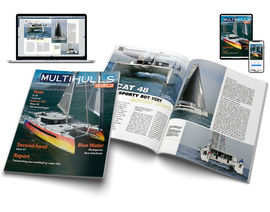
 Discover the 2025 winners!
Discover the 2025 winners! 
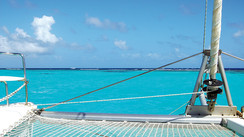
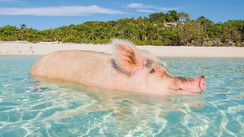
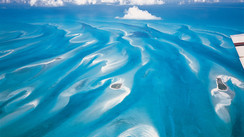
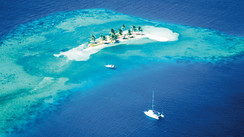
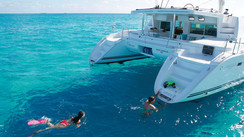
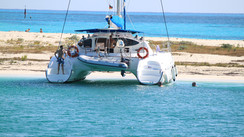







What readers think
Post a comment
No comments to show.